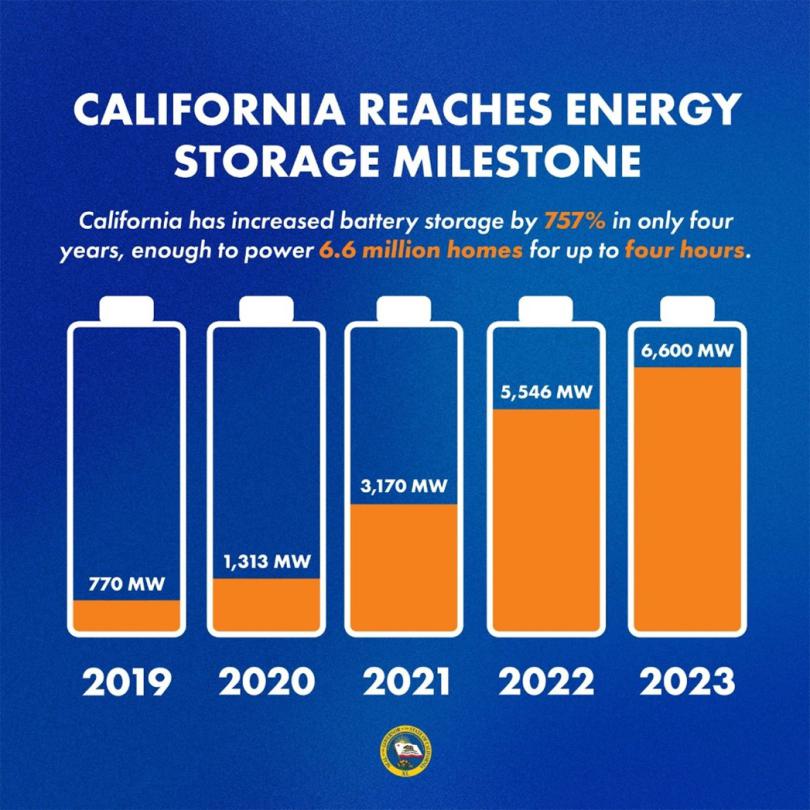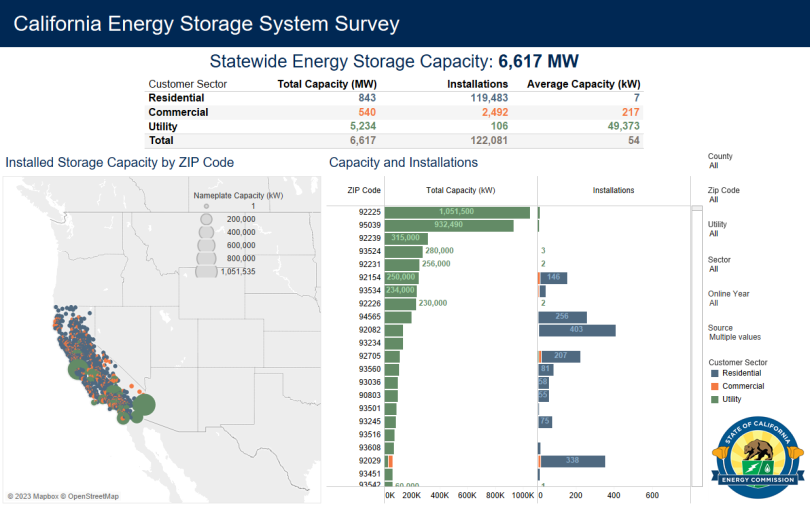For Immediate Release: October 24, 2023
SACRAMENTO — New data show California is surging forward with the buildout of battery energy storage systems with more than 6,600 megawatts (MW) online, enough electricity to power 6.6 million homes for up to four hours. The total resource is up from 770 MW four years ago and double the amount installed just two years ago.
Details of the energy storage fleet, a key component in the state’s transition to 100 percent clean energy by 2045, are now available in a new online dashboard unveiled by the California Energy Commission (CEC). The dashboard presents statewide information for the first time and features data on more than 122,000 residential, commercial, and utility-scale battery installations. CEC staff is tracking another 1,900 MW of energy storage projects expected to be online by the end of the year for a total of 8,500 MW.
The data highlights how California is not just a world leader in battery storage capacity, but how the state is achieving the unprecedented rate of new clean energy development required to meet goals for the transition from fossil fuels to a modernized grid powered by clean, renewable sources. The state is projected to need 52,000 MW of energy storage capacity by 2045 to meet electricity demand.
“Energy storage systems are a great example of how we can harness emerging technology to help create the equitable, reliable and affordable energy grid of the future,” said CEC Vice Chair Siva Gunda. “California is a global leader in establishing climate policy, but more importantly, it is leading the pack when it comes to putting policy into action and rapidly building projects that add clean, zero-carbon capacity to the grid.”
Energy storage projects capture power produced by wind and solar resources and discharge the energy back to the electric grid during times of peak demand. In California, electricity demand is highest in the late afternoon and early evening hours when the sun sets, causing solar resources to drop off before winds pick up later in the evening. The battery storage fleet provides a critical energy bridge during this time of day.
The energy storage dashboard tracks residential, commercial and utility-scale battery storage projects already installed and operating and utility-scale projects in development with near-term completion dates. The dashboard tracks only battery energy storage systems, which comprise the bulk of the state’s energy storage systems. The dashboard can be filtered by county, utility, sector, source, and ZIP code and features an interactive map. Data will be updated semi-annually.
The continued rapid build out of battery storage will be helped by legislation signed by Governor Gavin Newsom last year that aims to accelerate the deployment of clean energy projects. Energy storage projects and facilities that manufacture or assemble energy storage systems or components are eligible for a new streamlined permitting option at the CEC that holds the environmental review process to 270 days from when a complete permit application is filed.
###
About the California Energy Commission
The California Energy Commission is leading the state to a 100 percent clean energy future. It has seven core responsibilities: developing renewable energy, transforming transportation, increasing energy efficiency, investing in energy innovation, advancing state energy policy, certifying thermal power plants, and preparing for energy emergencies.
Newsroom
Media Contact
Media and Public Communications Office
MediaOffice@energy.ca.gov
(916) 654-4989


